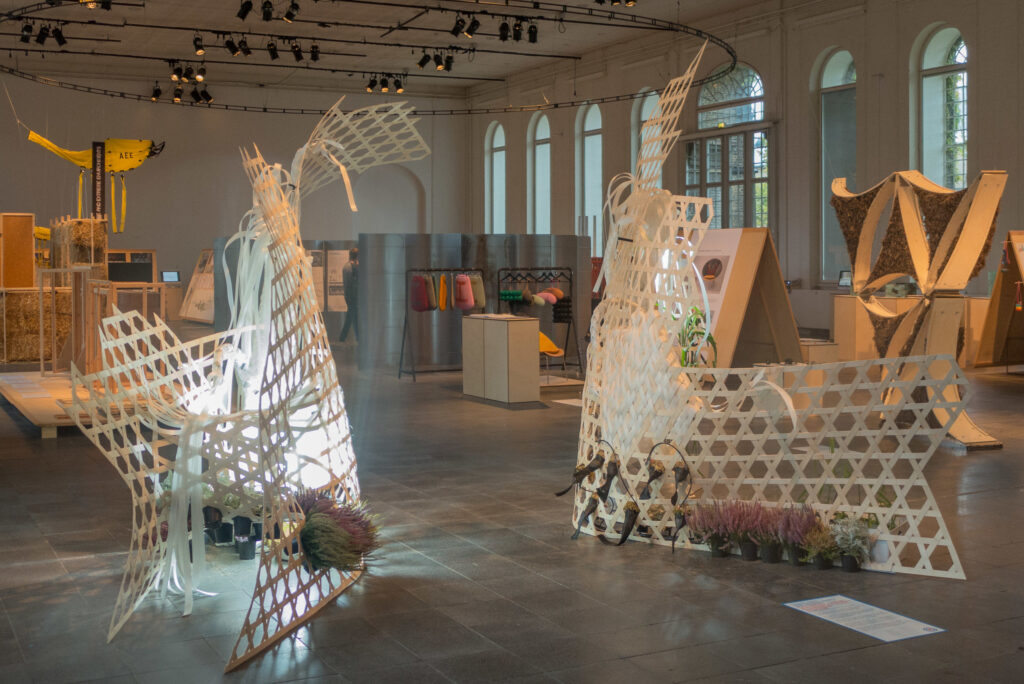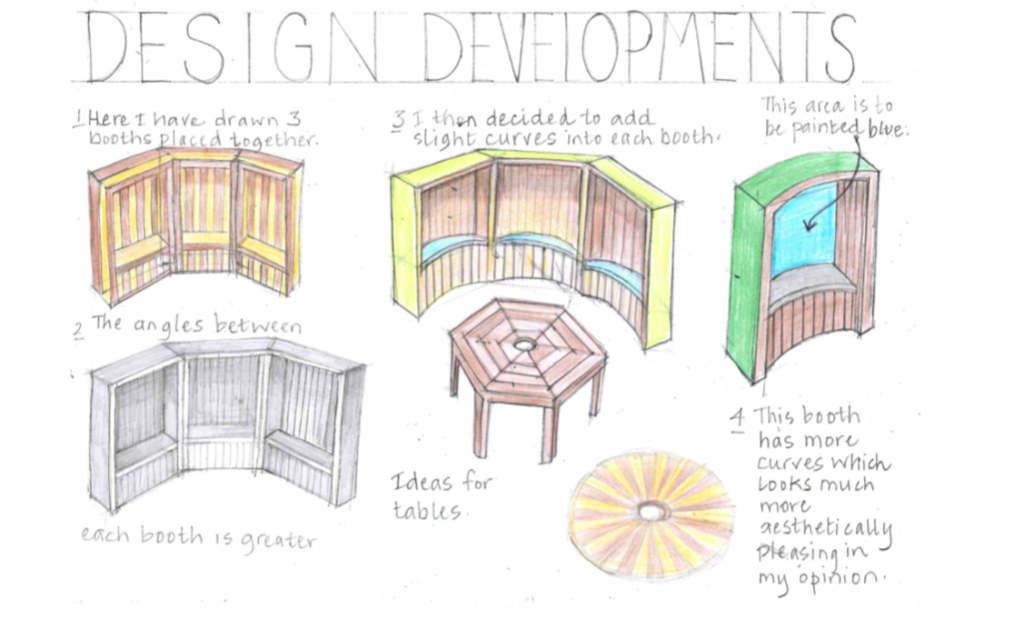
Introduction
The idea of the circular economy has become very influential in a number of industries, including interior design, in recent years. The circular economy promotes a closed-loop system where products are designed, used, and recycled continuously in order to emphasize sustainability, resource efficiency, and waste reduction. This strategy is in opposition to the conventional “take, make, dispose” linear economy. The interior design sector in India has started to adopt these ideas, leading to creative movements that give priority to resource conservation and environmental responsibility.
The Rise of the Circular Economy
A production and consumption model known as the “circular economy” emphasizes sharing, renting, reusing, repairing, refurbishing, and recycling current materials and products for as long as feasible. This strategy lessens waste, lessens the impact on the environment, and extends the life cycle of products. Indian interior designers are embracing the circular economy’s tenets as a result of the country’s growing environmental consciousness and emphasis on sustainable development.
Circular Economy and Interior Design
India’s interior design sector has historically relied on novel materials and goods to produce aesthetically beautiful and useful spaces. But as sustainability becomes more and more important, designers are starting to reconsider how they source materials, make designs, and handle waste. The circular economy has affected interior design trends in a number of ways.
- Material Selection and Sourcing
- Designers are increasingly choosing sustainable and recycled materials for their projects. Reclaimed wood, recycled metal, and repurposed textiles are becoming popular choices.
- The use of locally sourced materials reduces the carbon footprint associated with transportation and supports local economies.
- Biodegradable and non-toxic materials are being favored to minimize environmental impact.
- Design for Longevity and Flexibility
- Designing for durability and longevity is a key principle of the circular economy. Interior designers are creating timeless and adaptable spaces that can evolve with changing needs and preferences.
- Modular and flexible furniture designs allow for easy reconfiguration and repurposing, reducing the need for frequent replacements.
- Upcycling and Repurposing
- Upcycling involves transforming waste materials or unwanted products into new, higher-value items. This trend is gaining traction in interior design, with designers creating unique pieces from discarded materials.
- Repurposing old furniture and fixtures not only reduces waste but also adds character and history to interior spaces.
- Waste Reduction and Management
- The circular economy encourages efficient use of resources and minimization of waste. Designers are implementing strategies to reduce construction waste, such as precise material measurement and off-site prefabrication.
- Recycling programs and partnerships with waste management companies are being established to ensure responsible disposal of materials.
- Circular Business Models
- The rise of circular business models, such as furniture rental and take-back schemes, is transforming the interior design industry. These models allow consumers to lease furniture and return it for refurbishment or recycling at the end of its life cycle.
- Companies are offering refurbishment services to extend the life of existing furniture and fixtures, reducing the need for new purchases.
Case Studies: Circular Economy in Indian Interior Design
Several projects in India exemplify the successful integration of circular economy principles in interior design:
- Project Zero by Studio Lotus
- Studio Lotus, a leading design firm, undertook Project Zero to create a sustainable office space in New Delhi. The project focused on using recycled materials, energy-efficient systems, and waste reduction strategies.
- Reclaimed wood from old buildings was used for furniture and flooring, while recycled glass was incorporated into decorative elements.
- The design emphasized natural light and ventilation, reducing the need for artificial lighting and air conditioning.
- The Green Apartment by Karan Desai
- Karan Desai, a Mumbai-based interior designer, transformed a traditional apartment into a sustainable living space by incorporating circular economy principles.
- The project featured upcycled furniture, including a coffee table made from an old door and shelving units crafted from reclaimed wood.
- Energy-efficient appliances and water-saving fixtures were installed to reduce the environmental footprint of the apartment.
- Eco-Friendly Office by Morphogenesis
- Morphogenesis, an architectural and interior design firm, designed an eco-friendly office in Gurugram, Haryana, with a focus on sustainability and circular economy practices.
- The office space utilized recycled and locally sourced materials, including bricks made from construction waste and bamboo for furniture.
- Waste segregation and recycling programs were implemented to manage office waste effectively.
The Role of Technology in Promoting Circular Economy
Technology plays a crucial role in facilitating the transition to a circular economy in interior design. Several technological advancements are driving this change:
- Digital Design Tools
- Digital design tools and software enable designers to create precise and efficient designs, reducing material waste and optimizing resource use.
- Building Information Modeling (BIM) allows for detailed planning and coordination, minimizing errors and material wastage during construction.
- 3D Printing
- 3D printing technology enables the creation of custom, on-demand furniture and fixtures using recycled materials. This reduces the need for mass production and minimizes waste.
- Designers can experiment with innovative shapes and structures, pushing the boundaries of sustainable design.
- Smart Materials
- Smart materials, such as self-healing concrete and responsive textiles, enhance the durability and longevity of interior elements, aligning with the principles of the circular economy.
- These materials can adapt to changing conditions, reducing the need for replacements and repairs.
- Waste Tracking and Management Systems
- Advanced waste tracking systems help designers monitor and manage construction and demolition waste, ensuring proper disposal and recycling.
- Collaboration with waste management companies and recycling facilities is facilitated through digital platforms, promoting efficient waste handling.
Challenges and Opportunities
While the circular economy offers numerous benefits, its implementation in the interior design industry in India faces several challenges:
- Awareness and Education
- There is a need for greater awareness and education about circular economy principles among designers, clients, and stakeholders. Training programs and workshops can help bridge this knowledge gap.
- Cost Considerations
- Sustainable and recycled materials can sometimes be more expensive than conventional options. However, the long-term savings from reduced waste and increased durability can offset the initial costs.
- Infrastructure and Supply Chain
- Developing a robust infrastructure for recycling and waste management is essential for the success of the circular economy. Collaboration between designers, manufacturers, and waste management companies is crucial.
- Regulatory Support
- Government policies and regulations can play a significant role in promoting circular economy practices. Incentives for using recycled materials and implementing sustainable design strategies can drive industry adoption.
Despite these challenges, the circular economy presents significant opportunities for the interior design industry in India.

- Innovation and Creativity
- The shift towards sustainable design encourages innovation and creativity, allowing designers to explore new materials, techniques, and concepts.
- Market Demand
- Increasing consumer awareness and demand for sustainable products create a market for circular economy-based interior design. Businesses that embrace these principles can gain a competitive edge.
- Environmental Impact
- By adopting circular economy practices, the interior design industry can significantly reduce its environmental impact, contributing to a more sustainable future for India.
Conclusion
The impact of the circular economy on interior design patterns in India signifies a noteworthy transition towards eco-friendliness and resource conservation. By embracing ideas like material reuse, upcycling, waste reduction, and circular business models, designers are creating visually appealing and environmentally conscious spaces. Technology’s incorporation expands the circular economy’s potential by stimulating innovation and making it easier for sustainable practices to be adopted. The Indian interior design sector is well-positioned to play a key role in advancing a circular economy and making a positive impact on a more sustainable future, as long as awareness and infrastructure remain high.